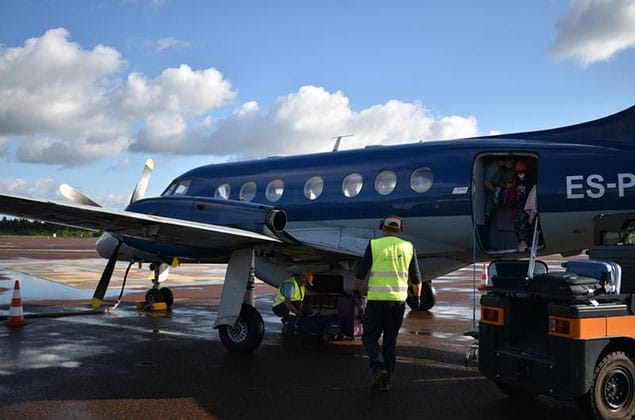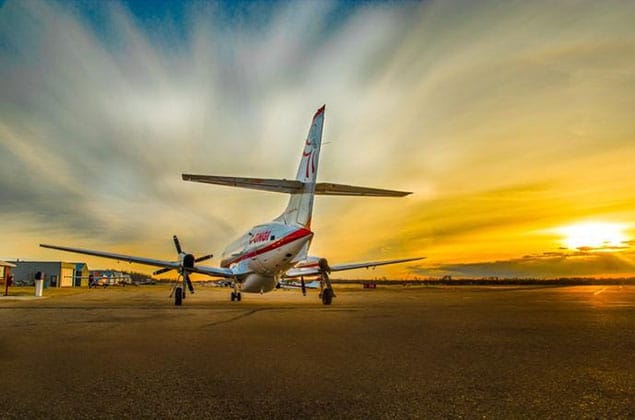Jetstream 31 Specifications & Booking
Overview of the Jetstream 31
The Jetstream 31 is a British-built twin-turboprop airliner designed by BAE Systems (formerly British Aerospace). It belongs to the commercial aviation category, primarily intended for short-haul and regional flights. The aircraft made its first flight on October 3, 1980, and received certification in June 1982.
Technical Specifications
The Jetstream 31 boasts the following technical specifications:
- Dimensions: Length - 24.58 m (80 ft 7 in), Wingspan - 20.72 m (68 ft 0 in), Height - 6.55 m (21 ft 6 in)
- Weight: Empty weight - 12,250 kg (26,970 lb), Maximum takeoff weight - 18,100 kg (39,900 lb)
- Engines: Type - Rolls-Royce Allison 250-B17F, Thrust - 622 kW (833 shp) each, Fuel efficiency - 0.33 kg/Nm (0.22 lb/shp)
- Performance: Maximum speed - 565 km/h (351 mph), Range - 1,600 km (994 miles), Cruising altitude - 7,620 m (25,000 ft)
- Capacity: Passengers - up to 32, Cargo capacity - 2,200 kg (4,850 lb), Crew - 2
Design and Features
The Jetstream 31's design features a distinctive fuselage shape with a flat nose section and a rounded tail. Its innovative aerodynamic design provides excellent lift-to-drag ratio and reduced fuel consumption. The aircraft also boasts advanced glass cockpit technology, which enhances pilot safety and efficiency.
History and Development
The Jetstream 31 development story began in the late 1970s when British Aerospace (BAe) aimed to create a modern, efficient airliner for regional routes. Key milestones include:
- First flight: October 3, 1980
- Certification: June 1982
- Entry into service: 1983 with British Airways
- Upgrades and variants: Various modifications were made to improve performance, fuel efficiency, and passenger capacity
Operational Use
The Jetstream 31 has been used by several airlines and organizations for regional flights. Some notable users include:
- Airlines: British Airways, Air Europe, Loganair
- Missions: Short-haul passenger flights, cargo transportation, medical evacuation missions
- Role in aviation history: The Jetstream 31 played a significant role in introducing modern, efficient airliner technology to the regional market
Interesting Facts
Here are some lesser-known facts about the Jetstream 31:
- Famous flight: In 1984, a Jetstream 31 set a world record for the fastest transatlantic crossing by a twin-turboprop aircraft
- Unique feature: The Jetstream 31's unique nose section design allows for improved airflow and reduced drag during takeoff and landing
- Pops culture appearance: The Jetstream 31 has appeared in various films, TV shows, and video games, often as a representation of modern air travel
Frequently Asked Questions
What makes the Jetstream 31 unique?
The Jetstream 31's innovative aerodynamic design, advanced glass cockpit technology, and efficient turboprop engines set it apart from other aircraft in its class.
How much does the Jetstream 31 cost?
The estimated cost range for a new or used Jetstream 31 is between $5 million to $15 million, depending on configuration, customization, and condition.
What is the range of the Jetstream 31?
The Jetstream 31 has a range of approximately 1,600 km (994 miles), making it suitable for short-haul and regional flights.
Which airlines operate the Jetstream 31?
Airlines such as British Airways, Air Europe, and Loganair have operated the Jetstream 31 in the past or currently. The aircraft's versatility and efficiency make it a popular choice for regional routes.
Is the Jetstream 31 still in production?
The Jetstream 31 is no longer in active production, as its production line was discontinued in the late 1990s. However, the aircraft remains popular among aviation enthusiasts and collectors due to its unique design and historical significance.





